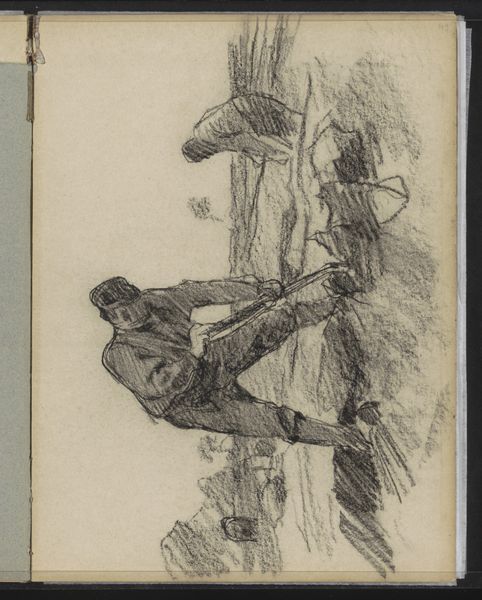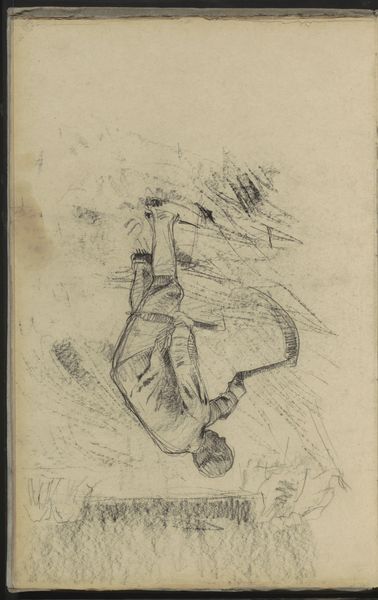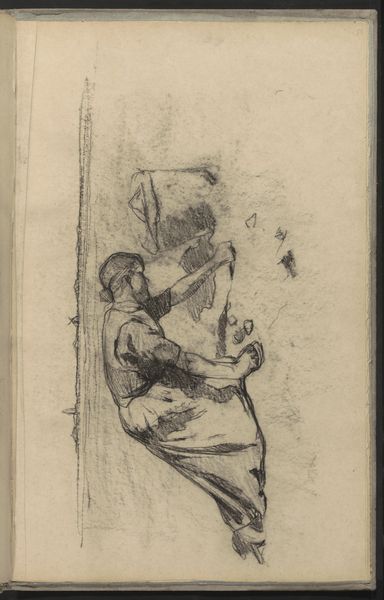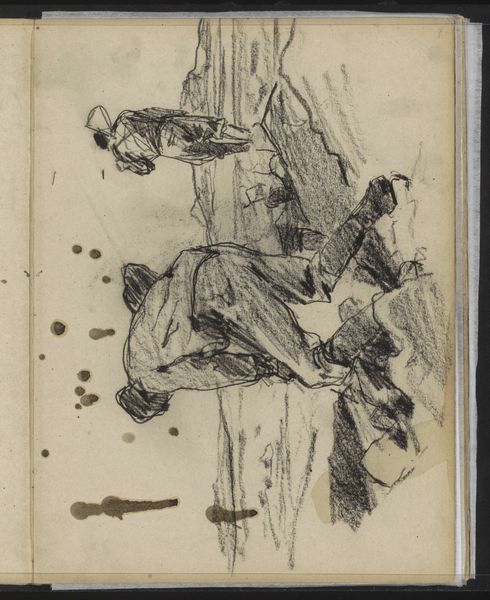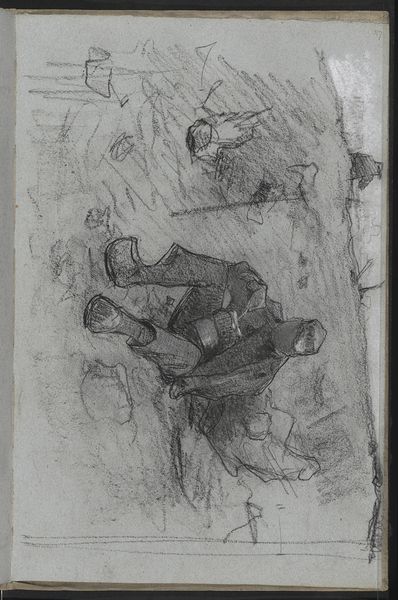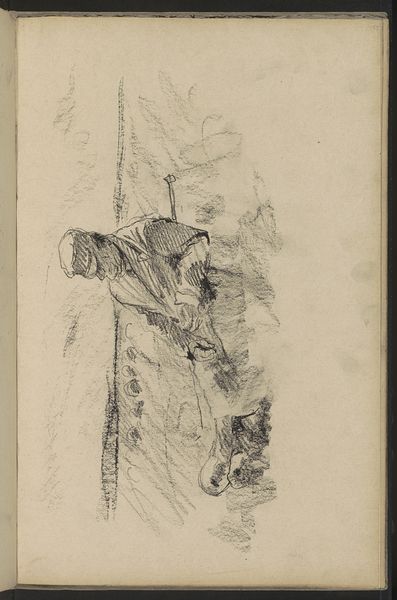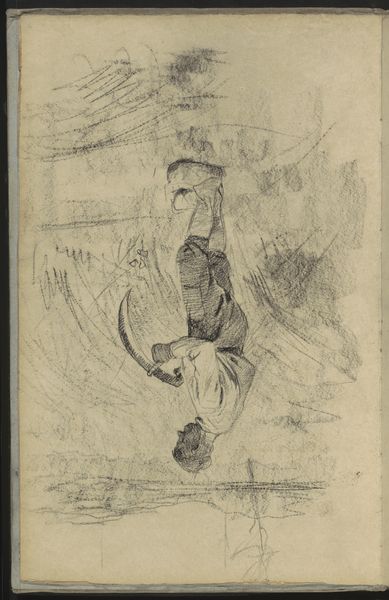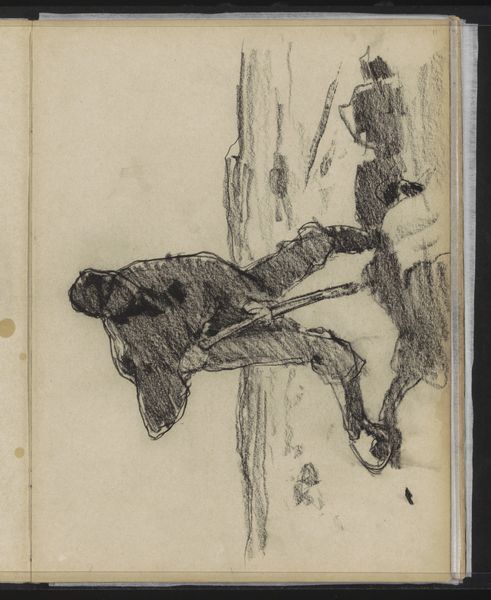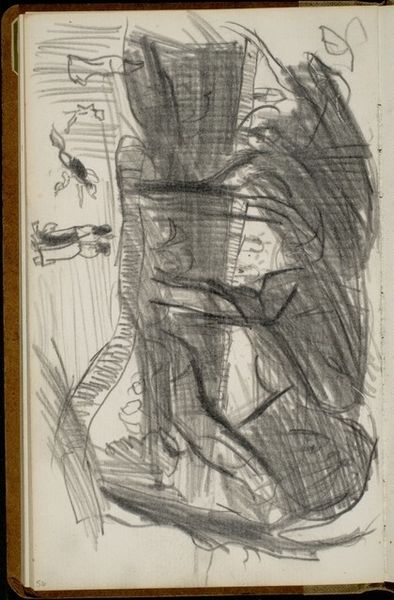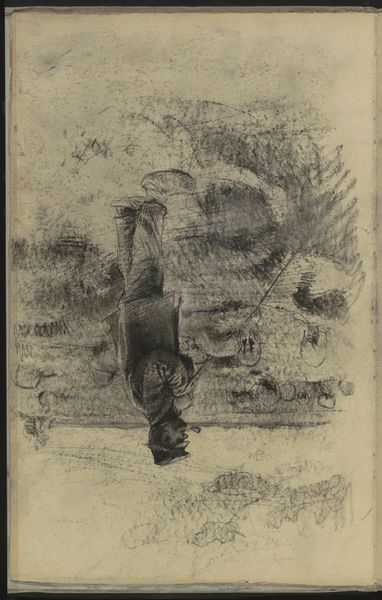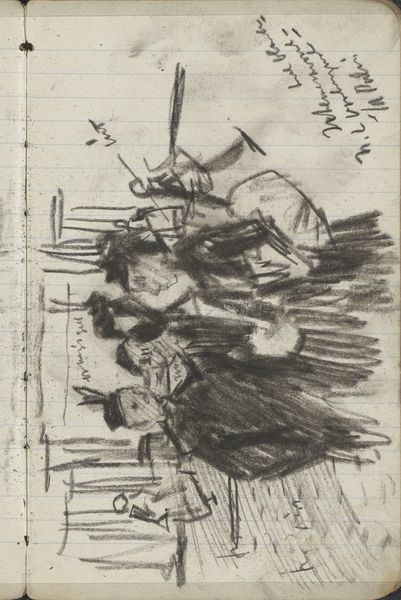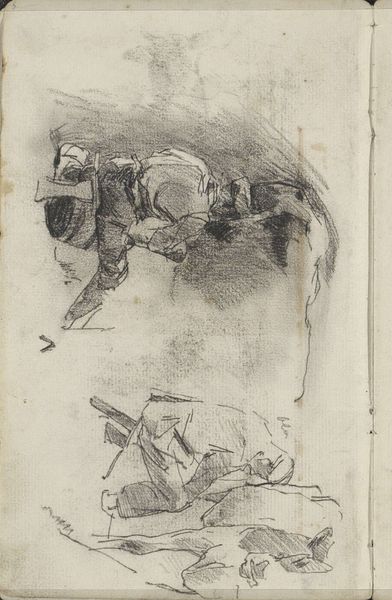
drawing, charcoal
#
drawing
#
impressionism
#
pen sketch
#
sketch book
#
landscape
#
figuration
#
charcoal
#
realism
Copyright: Rijks Museum: Open Domain
Curator: Willem Witsen’s drawing, "Heiwerkers op het land," created circa 1884 to 1887, captures a scene of workers in the countryside. It's currently held here at the Rijksmuseum. Editor: The stark charcoal really grabs me. It has an immediacy, a rough, unfinished quality that somehow makes the figures more raw, more real. It reminds me of Millet’s depictions of peasant life, a certain somber dignity. Curator: Indeed, the use of charcoal and pen contributes to the overall feeling of realism. The artist focuses on the materiality, how these lines create tone, volume, and a composition that leads the eye. Note how Witsen uses quick, gestural lines. The structural framework seems based on careful observations of light and shadow. Editor: Absolutely, but these aren’t just formal exercises. The image also prompts us to consider these workers in relation to the landscape, and the backbreaking labor of the working class. It’s important to remember this was a time of intense social upheaval, growing socialist movements. I wonder, to what extent was Witsen aware, or deliberately commenting? Curator: Certainly, one can draw broader inferences about labour and industrial change, but let's not lose sight of the pictorial strategies here. Witsen masterfully uses contrast to create depth. He juxtaposes the light areas on the workers’ clothing with the dark shadows of the surrounding landscape to create an immediate visual hierarchy. The strategic repetition of diagonal lines brings a powerful movement to the composition. Editor: Fair enough. Even though it might seem an unfinished work, the expressiveness of the quick lines and charcoal tones helps humanize the figures; these are working men and women, central to the nation's story. Curator: Looking at it again now, the strategic use of diagonals to guide the viewer through this tableau and a beautiful study in pictorial structure seem most apparent. Editor: I agree it’s an important composition but seeing its roots in a time of rapid urbanization reminds me we must recognize art's capability to give presence to marginalized lives.
Comments
No comments
Be the first to comment and join the conversation on the ultimate creative platform.
